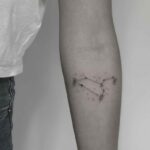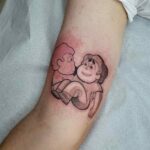Table of Contents
Hey there, ink enthusiasts! This is Tori, your resident expert in all things ‘skin and ink’. You know me well enough by now to expect a generous helping of humor served alongside heaping platefuls of tattoo wisdom. Today, I’m going to weave a tale of two machines—the rotary and the coil tattoo machines.
Each of these artistic tools has an individual story to tell, one steeped in history and nuanced with a distinct personality. They’re the yin and yang of the tattoo world, and like an award-winning barista perfecting the balance in your morning brew, every artist finds their rhythm in this duality.
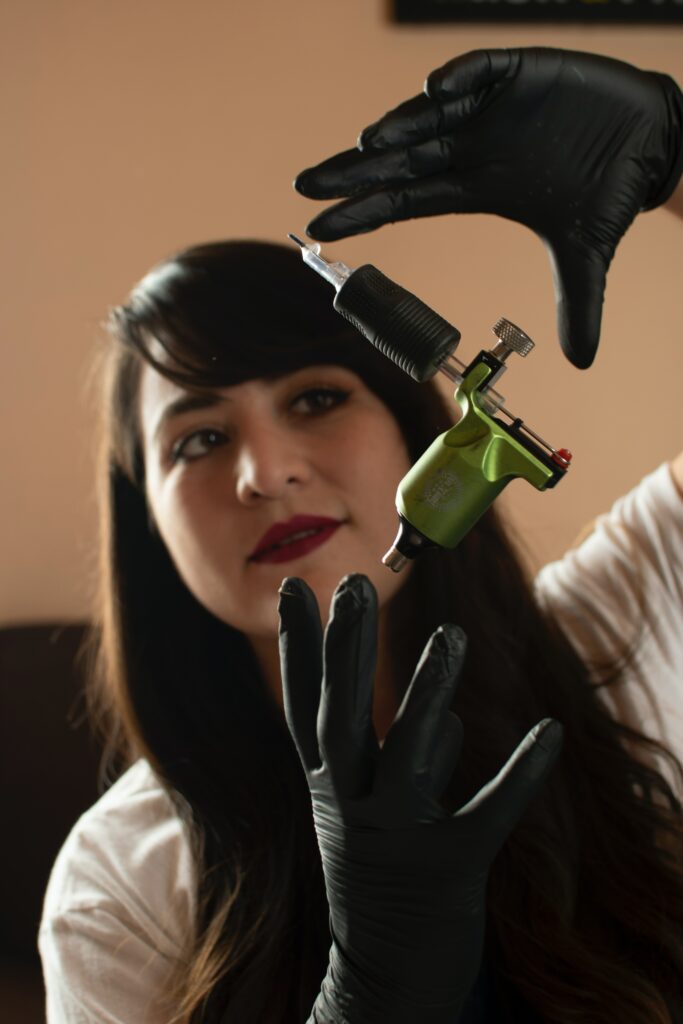
If you’ve ever been in the chair or behind it, you’ve likely pondered this heavyweight debate: the speedy finesse of rotary machines or the thunderous power of coil machines. Both have inked their mark in tattoo history, but which one is right for you, right now?
In this post, I will introduce you to these fantastic tools, shedding light on their characteristics, strengths, and weaknesses. Get ready for an intriguing deep dive into the anatomy of these machines, their operating principles, and their potential impacts on the quality of your artwork. You’ll also get the inside scoop on which machine type prominent tattoo artists, including myself, prefer to use.
So, whether you’re a seasoned artist pondering a switch, a rookie itching to get your hands on your first machine, or an ink aficionado curious about the behind-the-scenes of your favorite tattoo parlor, stick around. By the end of this article, you’ll be fluent in the language of tattoo machines. Now, let’s uncap these art warriors and let the inky battle commence!
Rotary Vs. Coil Tattoo Machines: An Overview
Picture this: you’re standing in a boxing ring, on one side is the Coil machine, a sturdy heavyweight known for its intricate line work and seamless shading. On the other, the nimble Rotary machine, quiet and lightweight yet just as capable of delivering vibrant colors and defined outlines.

The Coil, with its electro-magnet driven operation, is a trusty ally for experienced artists looking to create bespoke masterpieces, but it may not be a rookie’s first pick. The Rotary, on the other hand, is a quiet operator that loves a good color job and handles larger needles with less flair, making it a popular choice among novices and veterans alike.
Rotary vs. Coil Tattoo Machines: A Look At The Particulars
Beneath the surface, there are more factors to consider, like operation, weight, noise output, versatility, motion quality, and maintenance.
Operational Differences
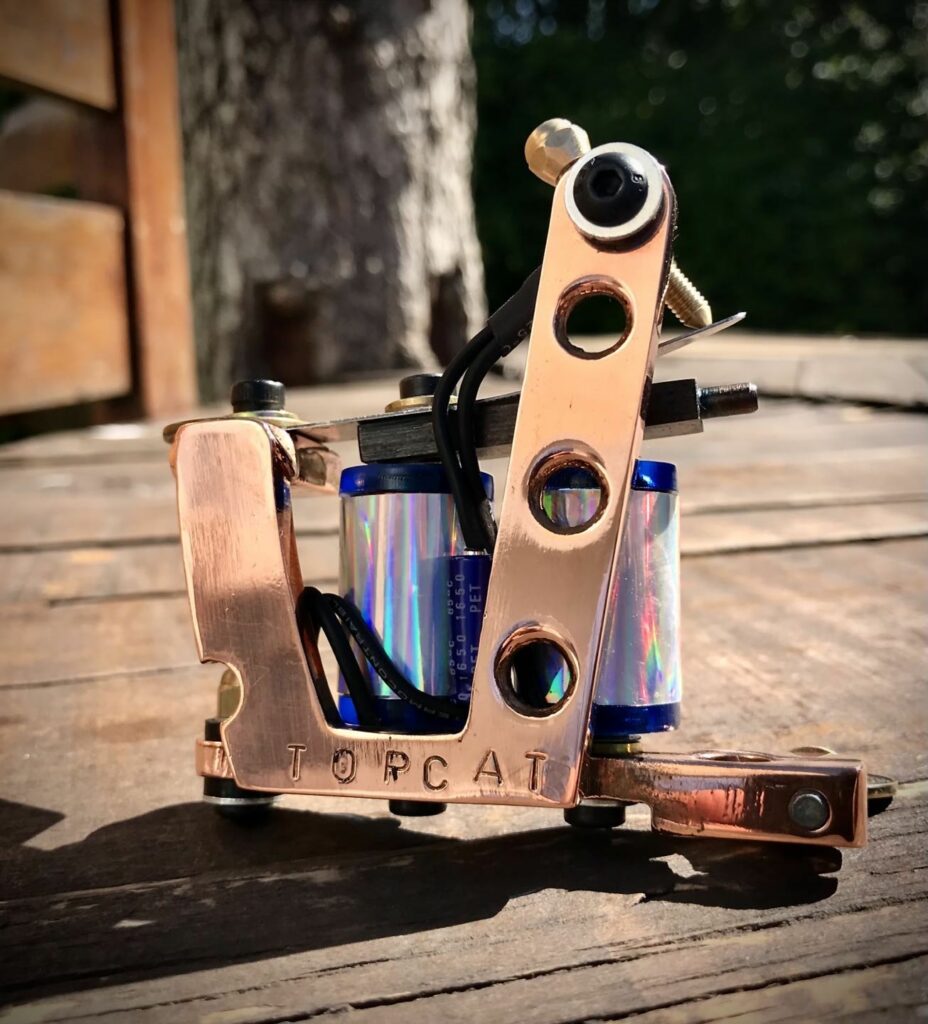
Here’s the skinny—Coil machines drive needles using an electromagnetic current, similar to a hammer’s thump. They provide more punch, but with that punch comes a rougher ride for the client. On the contrary, the Rotary machine houses a small motor that moves needles in a consistent up-down motion, offering a more gentle tattooing process, which is easier on the client and the artist’s hands.
When I was starting, my hands would often cramp up after a long session with the Coil. But once I switched to a Rotary for a few tasks, I could feel the difference—it’s like switching from heavy dumbbells to resistance bands in a workout, easier on the joints but still gets the job done.
Weight
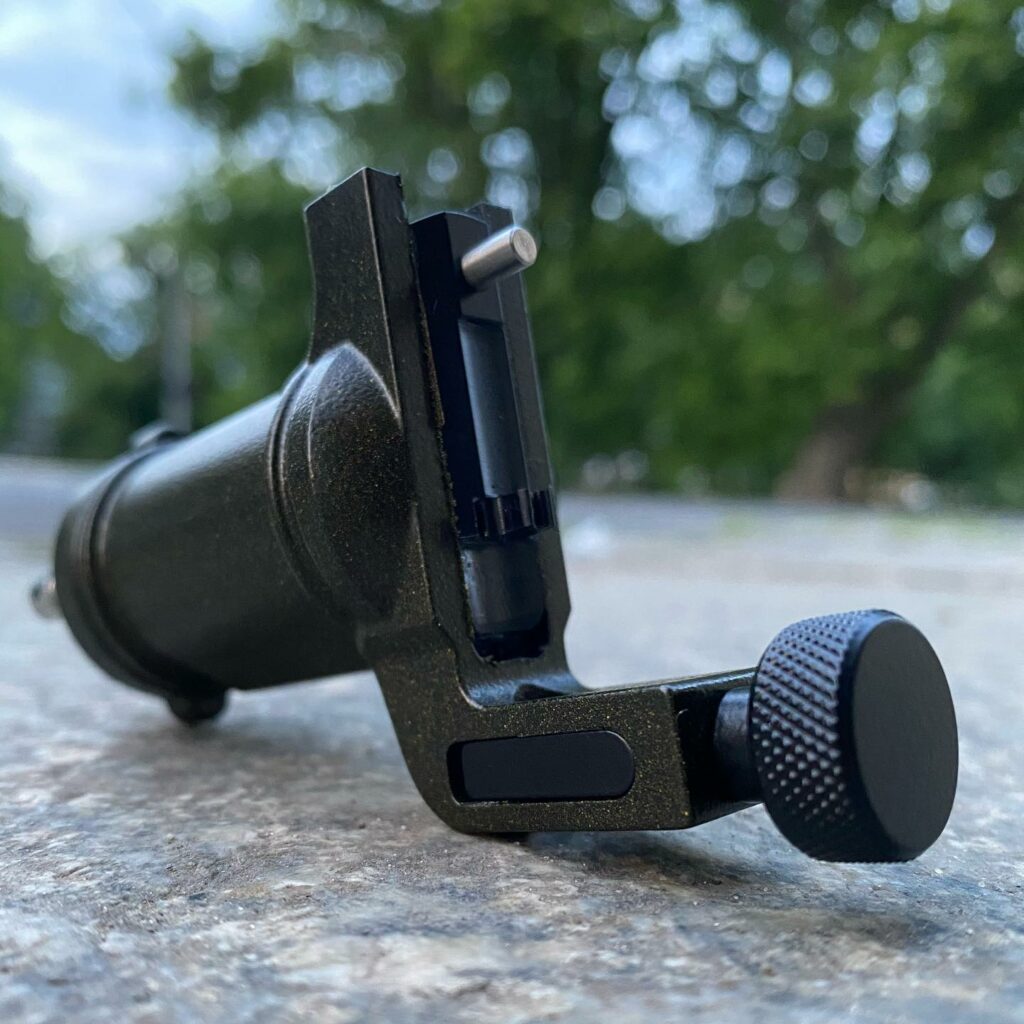
Coil machines are the burly ones in this duel, with their dual coils and iron rods. They might make your hands tire faster during those full-day inking sessions. Rotary machines, operating on a motor, are like the tattoo equivalent of a feather, allowing artists to work longer without worrying about hand fatigue.
Noise Output
The iconic buzz you hear in a tattoo parlor? That’s the Coil machine at work. But let’s be honest, that buzzing can be a bit nerve-racking for first-timers. On the other hand, Rotary machines purr quietly—ideal for easing the nerves of your jittery clients. I’ve found that some clients associate noise with pain; a quiet machine often translates to a less painful experience in their minds.
Versatility
Coil machines are specialists—they either draw lines or shade but doing both is not their thing. So, if you’re using a Coil, you might need a Rotary waiting in the wings. Meanwhile, Rotary machines are more versatile. You can use them for both line work and shading. Simply switch the needles, and you’re good to go. However, the drawback here is they aren’t as customizable as Coils. Like they say, the devil is in the details.
Motion Quality

The way a tattoo machine moves its needles is crucial. Coil machines have a punchy, hammer-like motion due to their on-off electromagnetic circuit. The Rotary, thanks to its continuous motor, offers a fluid needle motion that can cause less skin damage.
Maintenance
Finally, let’s talk upkeep. Coil machines are the winners here—they’re easy to disassemble, clean, and maintain. Rotary machines, however, demand more finesse in the maintenance department, including a regular lubrication schedule.
So, there you have it, folks—a detailed play-by-play of Rotary vs. Coil tattoo machines. Both have their strengths and weaknesses, and the choice ultimately depends on what works best for you. So experiment, find your style, and above all, keep inking!
What Are The Potential Impacts Of Using Either Type Of Machine On The Quality Of The Artwork
The quality of your artwork can indeed be influenced by the type of tattoo machine you choose to use, either a Rotary or Coil. Let’s break it down.
Rotary Tattoo Machines
- Smooth Shading and Gradation: Rotary machines are celebrated for their ability to perform smooth shading and color gradations. This is due to their consistent needle movement, which allows for more even distribution of ink.
- Reduced Trauma: The gentler operation of Rotary machines generally means less skin trauma. This not only helps with healing but also can result in cleaner lines and brighter colors, as the skin is better able to retain ink.
- Versatility: Since you can use the same Rotary machine for both line work and shading (by just changing the needles), it can provide a more consistent look and feel to the artwork, especially if you’re a novice.
However, the Rotary’s relative lack of power can be a limitation for some more complex designs, particularly those requiring larger needle groupings or layered, dense color packing.
Coil Tattoo Machines
- Sharp Lines and Detail Work: Coil machines are often preferred for their ability to produce sharp, intricate lines and detail work. They pack more of a punch, which can lead to crisper edges and more defined details.
- Customization: Coil machines can also be fine-tuned to the artist’s preference for different types of work (liner or shader setups), which can lead to better control and thus, higher quality artwork.
- Color Packing: Coil machines are great for color packing, due to their increased power. This can be advantageous in designs that require vibrant, solid blocks of color.
However, the heavier and more aggressive nature of Coil machines can potentially lead to more skin damage, which may affect the healing process and final look of the tattoo.
In the end, the impact of the machine on the quality of the artwork is also greatly dependent on the skill and experience of the artist. A seasoned tattoo artist can adapt and create stunning work with either machine. It’s all about understanding the machine’s quirks and capabilities, and leveraging them to your advantage.
Which Machine Do I Prefer?
Many traditional and old-school tattoo artists, who grew up using coil machines, still prefer them because of their powerful punch and the control they offer in creating intricate line work and detailed shading. Some well-known artists who prefer coil machines include Oliver Peck, known for his American Traditional style, and Freddy Negrete, famous for his black-and-grey fine line work.
On the other hand, I prefer rotary machines due to their versatility, lower weight, and quieter operation. I also do a lot of color work and a more gentle tattooing process. Some prominent artists who often use rotary machines include Nikko Hurtado, recognized for his color portraits, and Kat Von D, known for her black-and-grey portraits.
It’s also worth noting that many professional tattoo artists use both types of machines for different aspects of their work. They might use coil machines for lining and rotary machines for shading and coloring, or vice versa. Ultimately, the best tattoo artists are those who can adapt their skills to use any tool to create their desired effects.
Conclusion
And just like that, we’ve come to the end of our thrilling duel—Rotary vs. Coil. The winner? Well, it all comes down to your individual style, comfort, and the needs of your clients. While operational differences and maintenance requirements are essential factors to consider when choosing between rotary and coil machines, several other aspects might influence your decision.
- Cost: Generally, good quality coil machines tend to be a bit more expensive than rotary machines, although this can vary depending on the brand and model. So, your budget might play a role in your choice.
- Learning Curve: For beginners, rotary machines often have a more manageable learning curve. They’re straightforward to set up and use, which makes them an excellent choice for artists who are still honing their skills. On the other hand, coil machines can offer more nuances in terms of their operation, which can take more time and practice to master.
- Ergonomics and Comfort: Since rotary machines are lighter, they can be less tiring to use for extended periods. This could be a critical factor if you’re planning to do lengthy tattoo sessions.
- Artistic Style: The kind of work you plan to do can also influence your choice. For example, if you’re planning to do a lot of color work or prefer a softer, more painterly style, a rotary machine might be your best bet. If you intend to do more intricate line work or traditional tattoos, a coil machine might be a better choice.
- Noise Level: As mentioned before, rotary machines are quieter than coil machines. If you’re working in a setting where noise could be an issue, or you have clients who might be more comfortable with less noise, a rotary machine would be a good choice.
- Healing and Skin Trauma: Rotary machines typically cause less trauma to the skin, which could result in faster healing times for your clients. This could be a factor to consider, especially if you have clients with sensitive skin.
- Adjustability and Customizability: Coil machines offer more opportunities for fine-tuning and adjustments, which can provide more control over your work. If you like tinkering with your equipment to get it just right, you might prefer a coil machine.
Remember, it’s essential to experiment with both, get a feel of their weight in your hands, the rhythm of their operation, and the art you can create with them. The Coil machine might bring a bit more weight and noise to the table, but it’s a champ when it comes to detailing and customization. On the flip side, the Rotary is lighter, quieter, and versatile—making it an ideal partner for both line work and shading.
Be mindful of the maintenance and care each machine requires to keep them running smoothly, and never compromise on hygiene standards. Whatever path you choose, just remember that these are tools of your art, and it’s your skill and creativity that truly bring a tattoo to life. So, go ahead, choose your champion, and unleash your creativity. Happy tattooing!



